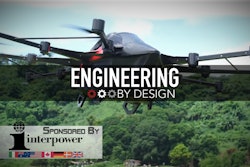Earlier this month, Ford rolled out exoskeletons to employees at 15 plants across the globe, mostly workers who regularly perform overhead tasks.
Ford partnered with Ekso Bionics which outfitted the staff with the EksoVest to give employees up to 15 pounds of lift assistance. Workers at a pair of assembly plants in Michigan piloted the project, and helped Ekso refine the design before it was rolled out globally.
Exoskeletons are still a new concept when it comes to real life manufacturing environments, and according to Zach Haas, Senior Product Manager at Ekso Bionics, it will be market leaders like Ford that will pave the way for the technology.
The next step towards widespread adoption will come as the technology improves and designs evolve - and maybe as the cost comes down. Right now, an EksoVest costs about $4,000, but they are also custom fit for each operator. However, Ekso does have a general configuration kit that companies typically use on multiple workers for in-house trials.
According to Haas, Ekso Bionics has invested thousands of hours in the exoskeleton’s design and development. In addition to meeting customer need, the company also makes sure to design for manufacturing, which takes place at the company’s headquarters in Richmond, CA.
Throughout the process, one of the greatest design challenges Ekso faced was balancing functionality and durability against overall product weight. The EksoVest had to be light enough for operators to wear comfortably all day, but it also had to provide the intended support and be rugged enough to withstand wear and tear on the job.
According to Haas, these elements naturally work against one another, but the engineering team worked tirelessly and experimented with a variety of materials to develop the EksoVest as it is today - lightweight, durable and effective at reducing operator fatigue.
Right now, hundreds of EksoVests are currently in use, but Haas expects the number to continue to climb dramatically as clients complete in-house trials and scale up to company-wide adoption.
“I don’t want the EksoVest to ever leave,” says Nick Gotts, an original EksoVest operator at Ford's Flat Rock Assembly facility, “Any job that’s overhead, I wouldn’t work without it.”
There’s no telling of what the future holds for exoskeletons in manufacturing facilities, the only thing that’s certain, is that they’ll have a hand holding it up.






















